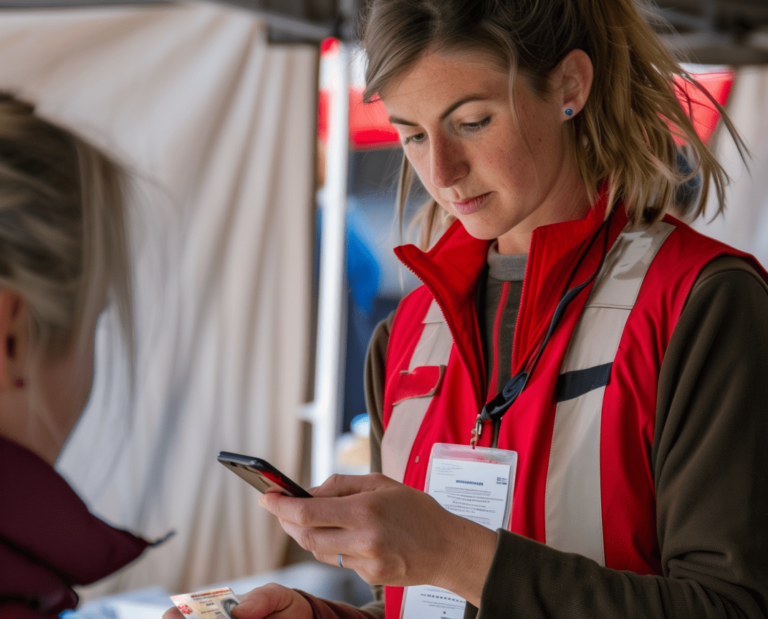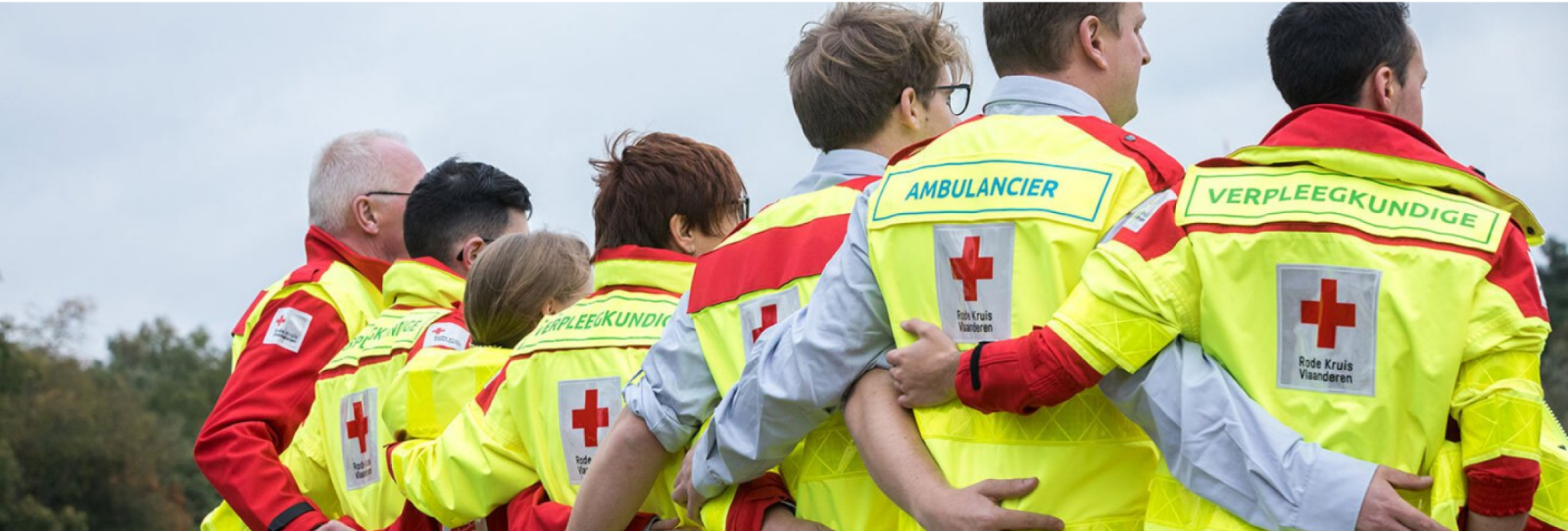Efficient patient registration with Scanbot MRZ Scanner SDK

Goal
The Red Cross Flanders aimed to replace outdated eID scanners with an Android app and create a “first aid first” registration workflow.
Challenge
eID scanners were introduced to collect patient data. While accurate, the devices were too slow and made the workflow too complex. An alternative was needed.
Solution
With the Scanbot MRZ Scanner SDK, patients can now receive treatment without having to register at a dedicated counter, reducing the administrative work for the volunteers and guaranteeing efficient medical aid.
Key Results
No wait time
for patients
1 volunteer per aid post
freed up for other tasks
99% accurate
personal data collection
As the recognized first aid expert organization in the Flemish Region, the Red Cross Flanders aims to provide fast medical assistance. To this end, its volunteers and patients should not be burdened with a complex registration workflow that is error-prone and time-intensive. By replacing outdated eID scanners with an Android app, the Red Cross Flanders wanted to create a “first aid first” registration workflow. Easy, fast and accurate patient data collection leaves more time for what matters – providing the best possible patient care.
Amongst other activities, the Red Cross Flanders provides medical assistance at events, such as festivals and sports matches. In this context, the volunteers must register the patients before providing them with medical care. Correct registration is not easy: Hard-to-spell names and addresses, unconscious patients, and lack of time all cause errors in the collected data. Yet accurate data is vital: Incorrect information causes a range of problems, including the inability to find patients in the system, delays, providing too much medication when a patient presents multiple times, and poor data to plan for future events. The Red Cross Flanders tackled this challenge by introducing eID scanners to collect patient data. While accurate, the devices were too slow and made the workflow too complex. Additionally, they could only be used at one fixed counter per aid post, the “patient desk”, limiting patient admissions to one at a time. An alternative was needed.
The Scanbot MRZ Scanner SDK provided the right solution for the organization’s requirements. After an integration and testing time of only a few business days, it now provides fast and accurate data capture with just a single scan. Patients can now receive treatment without having to register at a dedicated counter, reducing the administrative work for the volunteers and guaranteeing efficient medical aid.

Our volunteers are delighted by the Scanbot MRZ Scanner SDK. They no longer need to complete a complex administrative process, as they can now complete ID registration with just a single scan. Instead, they can focus on providing the best medical care to our patients.
“First aid first” – the new patient registration process with Scanbot SDK
Before integrating the Scanbot MRZ Scanner, the Red Cross Flanders used a physical eID scanner with a laptop to register incoming patients. However, this method was not patient-friendly, as it required several steps and so delayed the needed aid.
With the Scanbot MRZ Scanner SDK, this time-intensive workflow was cut into simple steps. This first-aid-first workflow allows volunteers to rapidly give patients the medical aid they need. Additionally, it simplifies the necessary administrative tasks.
The volunteers were delighted by the fast MRZ Scanning capabilities offered by the Scanbot SDK. With them, the administrative overhead was reduced significantly, leaving more time to focus on the actual patient care. At the same time, the new workflow accurately records personal data for further processing and leaves one full-time employee free to handle other tasks.
Additionally, the Red Cross Flanders tested the Scanbot Barcode Scanner SDK for scanning barcodes on ID documents.
The process before the Scanbot SDK
The patient reaches the “patient desk.” Staff use an eID scanner and a connected laptop to scan the ID document.
Then, they print out a paper form the patient needs to take along when seeing the medical professional.
After completing this registration process, the patient can receive care.
Here, the medical staff notes down details of the procedure on the paper patient form.
Finally, this form must be digitized at the patient desk.
The process with the Scanbot SDK
A patient arrives at the first aid post and is sent directly to a medically trained volunteer.
While assessing the patient, the volunteer scans the MRZ on their ID document to register their data.
The volunteer treats the patient and records the care given directly in the app.
Scanbot’s vision and mission
Our initial goal for the Scanbot SDK was for it to read any text-based information via mobile devices – today, this has become a reality. The easy-to-integrate software creates virtually endless possibilities to streamline and facilitate processes for companies, employees, and customers alike, whether in document management, onboarding, sales, or HR.
We now use machine learning algorithms that understand all kinds of complex document types to open up even more possibilities for automated workflows that connect and process data in real time.
At the same time, we want to protect users’ personal data, which is why we opted for on-device intelligence. Scan results are encrypted before transmission to keep them safe from any outside attacks. To guarantee maximum privacy, no data is ever sent to Scanbot’s or any other server.



